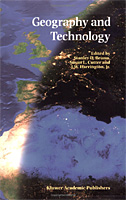GIS&T and the "RMA"
The literature suggests that so called Revolutions in Military Affairs (RMA) have occurred in the past with the advent of technologies such as gunpowder, railroads, the aircraft carrier, and nuclear weapons. This literature goes on to suggest that a new RMA is emerging predicated on the idea that a rapid pace of technological innovation is altering the nature of modern warfare and the basic foundations of security. Barry Schneider of the Air War College identifies four new warfare applications that represent this RMA: long range precision strike, information warfare, dominating maneuver, and space warfare. All of these warfare applications are enabled by or associated with "information dominance" also known as "dominant battlespace awareness." The authors of the reading contend that both of those concepts are fundamentally based on geography and geographic technologies.
As you read the chapter by Corson and Palka, do some critical thinking and ask yourself:
- The authors use limited definitions of the RMA based on Schneiderís approach. Are there other definitions of the RMA and if so do the authorís contentions still stand up?
- The authors are both geographers writing in a geography book. How might different authors from different communities have envisioned the underpinnings of the RMA? In terms of power relationships, how does the contention that the RMA is underpinned by geographic techniques bolster the discipline of geography and GIS&T, while potentially disadvantaging other disciplines?
- Do you agree with the authorís contentions? Why or why not?
